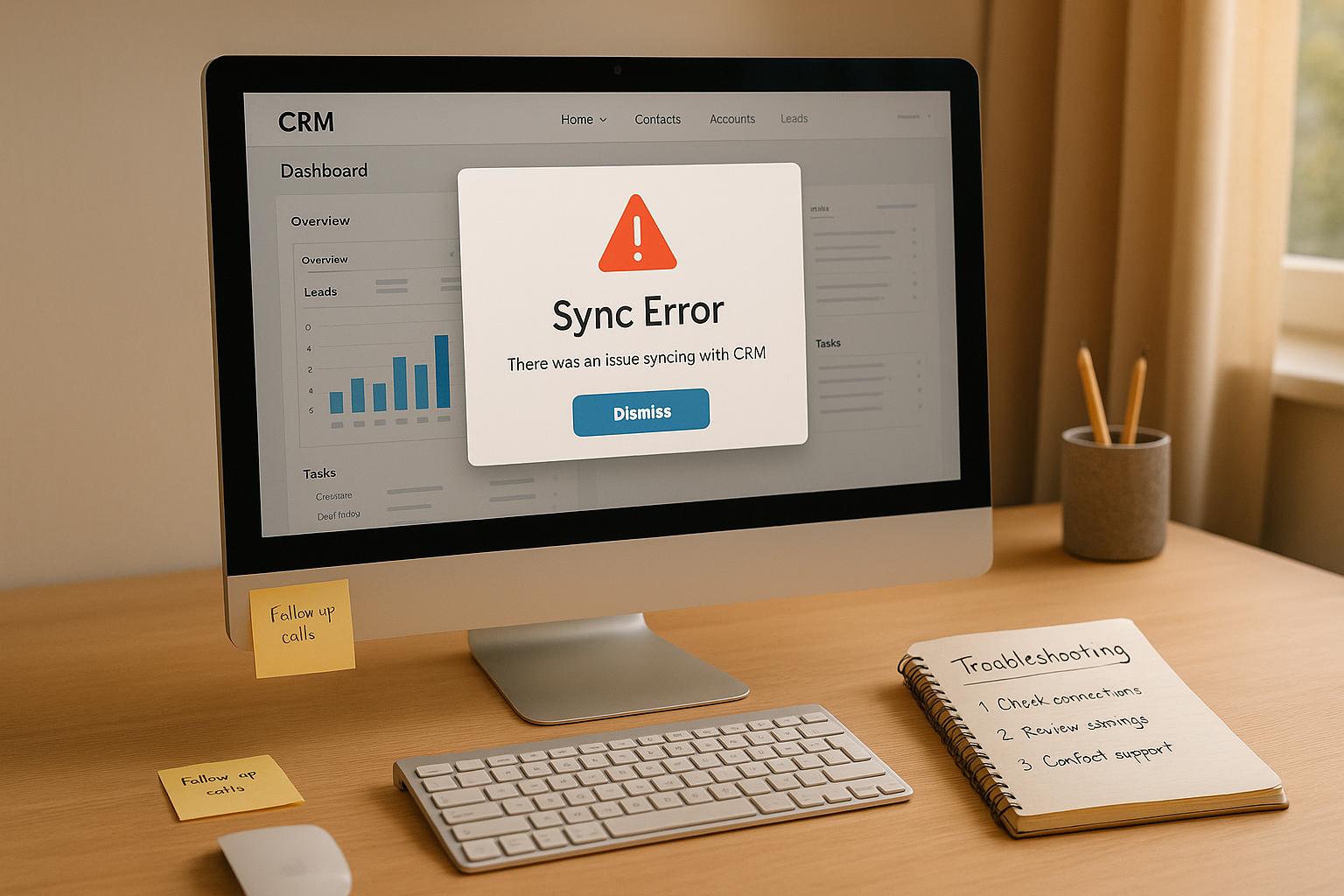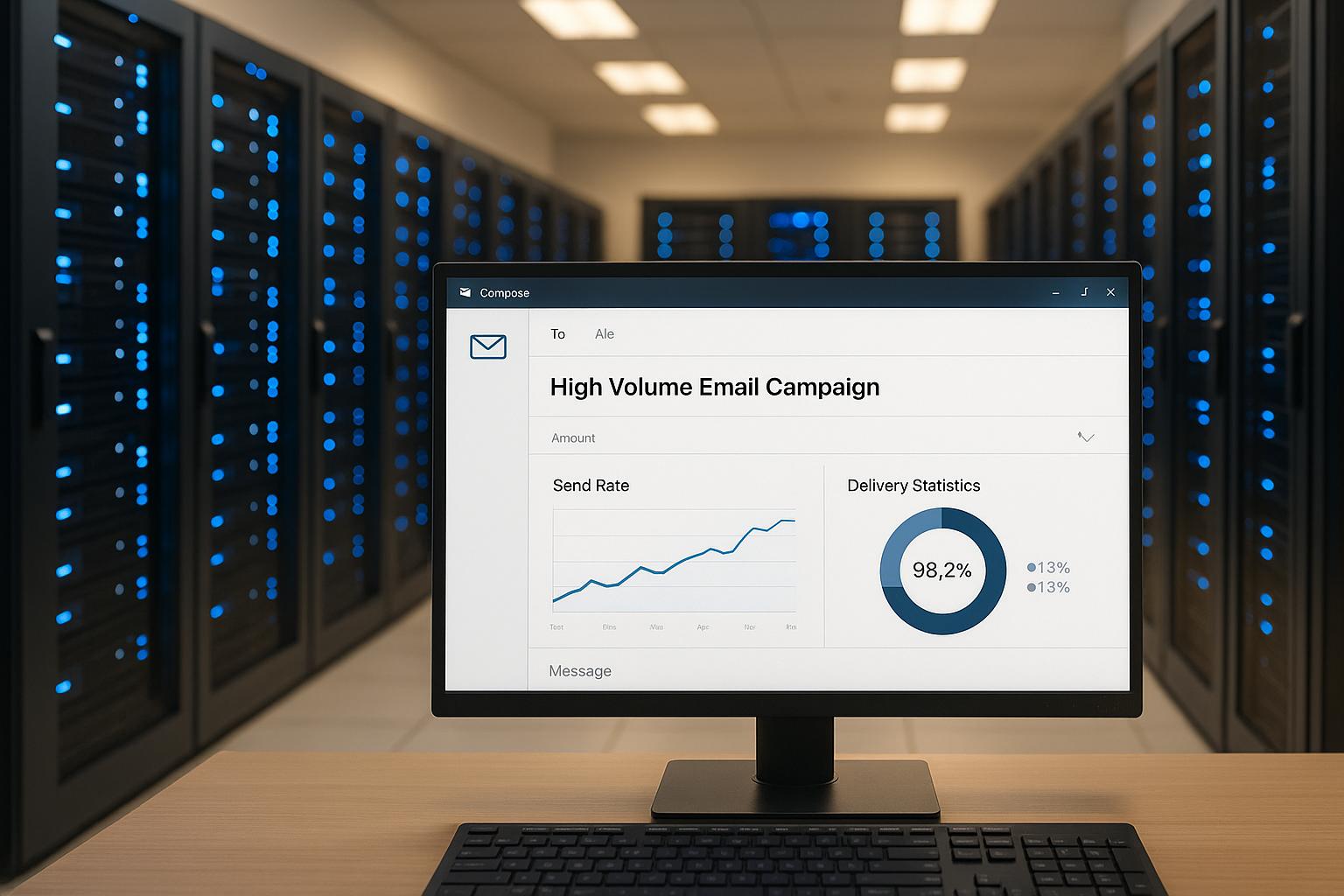Email platforms face huge challenges during peak traffic times like Black Friday or major promotions. Managing these spikes is critical to avoid delays, system slowdowns, or emails landing in spam folders. Here’s how platforms tackle it:
- Load Balancing: Distributes email tasks across multiple servers to prevent overload.
- Cloud Scaling: Adds resources instantly during high demand.
- Real-Time Monitoring: Tracks metrics like delivery time and server performance to fix issues quickly.
- Smart Sending Strategies: Spreads campaigns over time and segments email lists for smoother delivery.
System Design: Batch Promotional Emails (with FAANG ...
Traffic Management Methods
Email platforms rely on advanced systems to handle high traffic volumes while keeping services reliable.
Server Load Distribution
To avoid overloading any single server, platforms use load balancing to distribute email-sending tasks across multiple servers. Here's how it works:
- Multiple Data Centers: Servers spread across different locations provide backup options and can speed up delivery times.
- Smart Routing: Automated tools send email traffic to servers based on their current health, workload, and how close they are to the recipient.
- Failover Protection: If one server hits its limit, traffic is automatically shifted to others without interruption.
In addition to server load balancing, platforms often turn to cloud solutions for added flexibility.
Cloud Resource Management
Cloud services allow email platforms to adjust resources dynamically, especially during traffic spikes.
Benefits of this approach include:
- Automatic Scaling: Resources are added instantly when demand rises.
- Cost Control: Platforms pay only for the resources they use, avoiding unnecessary expenses.
- Optimized Performance: Resources are directed to areas with the highest demand to maintain delivery speeds.
These systems constantly monitor metrics like CPU usage, memory, and network activity to make quick adjustments. Together, these methods ensure efficient performance tracking and resource management.
Measuring Platform Performance
Advanced traffic management techniques rely heavily on performance metrics to make quick adjustments during busy periods. Keeping an eye on these metrics is critical when traffic surges.
Speed and Delivery Metrics
Platforms use specific metrics to evaluate their performance under heavy loads:
- Throughput Rate: Measures how many emails are processed per second (often in the thousands per hour).
- Delivery Time: Tracks the average time it takes for an email to go from the send request to the recipient's inbox.
- Queue Length: Shows how many emails are waiting to be processed at any given time.
- Server Response Time: Indicates how fast the platform responds to API requests.
- Resource Utilization: Monitors CPU, memory, and network usage across server clusters.
These metrics help identify potential problems before they affect delivery. For example, if the queue length grows rapidly but throughput stays constant, it might signal the need for more processing power.
Live Performance Tracking
Real-time monitoring is crucial for maintaining platform stability during traffic spikes. Here’s how it works:
Dashboard Metrics
| Metric | Normal Range | Alert Threshold |
|---|---|---|
| Server CPU Usage | 40-60% | >80% |
| Memory Utilization | 50-70% | >85% |
| Queue Processing Speed | <500ms | >2000ms |
| Bounce Rate | <2% | >5% |
Automated tools play a key role by:
- Continuously tracking performance and logging historical data for trend analysis.
- Alerting operators to any unusual activity or metric spikes.
- Automatically scaling resources to handle increased demand.
sbb-itb-6e7333f
Tips for Stable Email Sending
Keeping your email delivery steady under heavy load isn't just about performance metrics - it also depends on smart strategies to manage your operations effectively.
Choosing the Right Sending Time
Spread out your email campaigns across different time slots to avoid overwhelming your system. For larger campaigns, consider scheduling them during less busy hours to avoid bottlenecks and improve delivery success.
Breaking Down Your Email List
Dividing large email lists into smaller, manageable segments can help maintain system stability and ensure consistent delivery rates. Here are a few ways to segment your list:
- By engagement history: Focus on active subscribers first.
- By geography: Match sending times to the recipient's time zone.
- By domain: Reduce the chances of triggering spam filters.
- By behavior: Group recipients based on past interactions.
Scheduling Regular Platform Maintenance
Routine maintenance is essential to keep your email system running smoothly, especially during high-traffic periods:
- Daily: Keep an eye on bounce rates, spam complaints, and delivery performance. Address any issues as they arise.
- Weekly: Clean up your email lists by removing invalid addresses to reduce unnecessary load.
- Monthly: Schedule system updates and performance tweaks during non-peak hours to minimize disruptions.
Summary
Managing peak traffic effectively requires a combination of strong infrastructure, real-time monitoring, and strategic sending practices. These elements work together to ensure systems can handle high demand while maintaining reliable delivery rates, often exceeding 99%.
Key Components for Traffic Management:
- Scalable cloud infrastructure and queue systems to handle surges
- Real-time performance tracking to spot and resolve bottlenecks
- Strategic sending practices to optimize delivery timing
- Validation tools to maintain clean email lists
Platform Maintenance Essentials:
- Regularly clean and validate email lists
- Optimize sending schedules for better performance
- Use proactive monitoring to prevent delivery issues
- Automate verification processes to save time and resources
Using email validation tools is a practical way to improve list hygiene and boost deliverability.
The goal is to build a system that can grow with increasing demands while ensuring reliable performance. By combining smart sending techniques with advanced monitoring, email platforms can handle high traffic without compromising on delivery quality.
For additional support, the Email Service Business Directory offers resources to help you find platforms equipped with advanced traffic management tools, keeping your campaigns running smoothly even during peak periods.
FAQs
How do email platforms prevent emails from going to spam during high-traffic periods?
Email platforms use a combination of advanced strategies to ensure emails are delivered to inboxes, even during peak traffic times. These include real-time monitoring, adaptive sending algorithms, and reputation management to maintain high deliverability rates.
By spreading email delivery over time, platforms prevent overwhelming email servers. They also implement authentication protocols like SPF, DKIM, and DMARC to verify sender identity and protect against spam filters. Additionally, maintaining a clean email list and avoiding spam-triggering content ensures better inbox placement.
How does segmenting email lists help manage high traffic and improve performance?
Segmenting email lists is a powerful strategy for managing high email traffic while maintaining performance and reliability. By dividing your audience into smaller, targeted groups based on factors like demographics, behavior, or preferences, you can send more relevant content to each segment. This not only improves engagement rates but also reduces the strain on your email platform during peak traffic times.
When emails are tailored to specific segments, they are more likely to reach the intended recipients' inboxes, reducing bounce rates and improving deliverability. Additionally, segmentation enables better resource allocation, as you can prioritize high-value segments and avoid overloading your system with unnecessary bulk sends. This ensures smoother performance, even during periods of high email volume.
How do real-time monitoring and performance metrics help prevent email delays during high-traffic promotions?
Real-time monitoring and performance metrics are essential for ensuring smooth email delivery during high-traffic events like major promotions. By tracking key metrics such as server load, delivery rates, and bounce rates in real-time, email platforms can quickly identify and address potential bottlenecks before they cause delays.
These tools also allow email service providers to optimize resource allocation, reroute traffic if servers are overloaded, and maintain consistent performance even during peak periods. This proactive approach helps ensure your emails reach recipients on time, maximizing the success of your campaigns.


